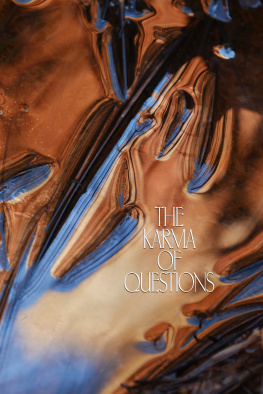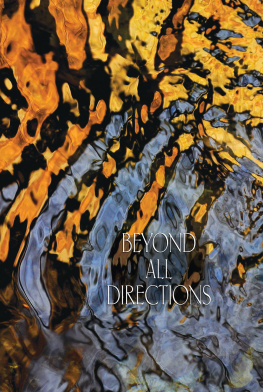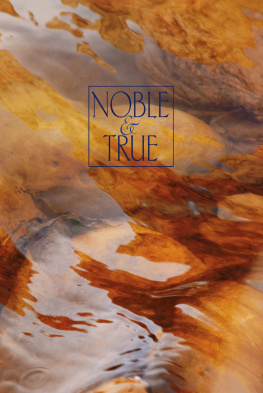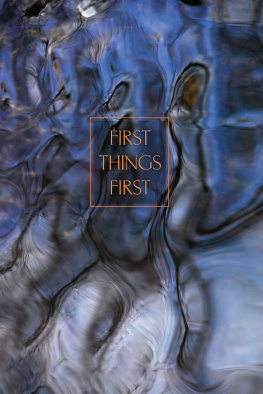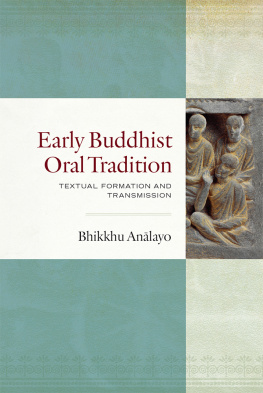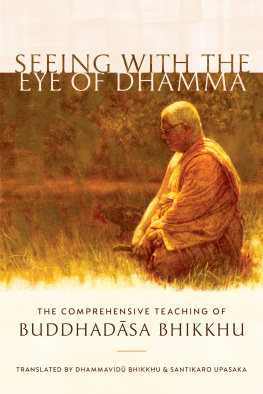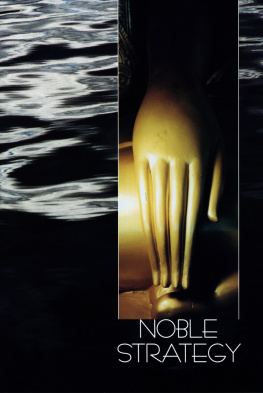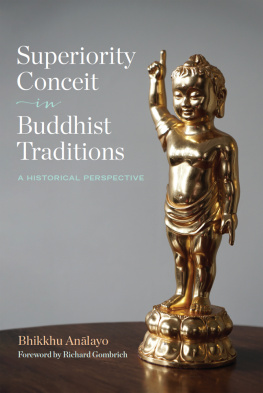Ṭhānissaro Bhikkhu - Selves & Not-self: The Buddhist Teaching on Anattā
Here you can read online Ṭhānissaro Bhikkhu - Selves & Not-self: The Buddhist Teaching on Anattā full text of the book (entire story) in english for free. Download pdf and epub, get meaning, cover and reviews about this ebook. year: 2018, publisher: Metta Forest Monastery, genre: Religion. Description of the work, (preface) as well as reviews are available. Best literature library LitArk.com created for fans of good reading and offers a wide selection of genres:
Romance novel
Science fiction
Adventure
Detective
Science
History
Home and family
Prose
Art
Politics
Computer
Non-fiction
Religion
Business
Children
Humor
Choose a favorite category and find really read worthwhile books. Enjoy immersion in the world of imagination, feel the emotions of the characters or learn something new for yourself, make an fascinating discovery.
- Book:Selves & Not-self: The Buddhist Teaching on Anattā
- Author:
- Publisher:Metta Forest Monastery
- Genre:
- Year:2018
- Rating:5 / 5
- Favourites:Add to favourites
- Your mark:
- 100
- 1
- 2
- 3
- 4
- 5
Selves & Not-self: The Buddhist Teaching on Anattā: summary, description and annotation
We offer to read an annotation, description, summary or preface (depends on what the author of the book "Selves & Not-self: The Buddhist Teaching on Anattā" wrote himself). If you haven't found the necessary information about the book — write in the comments, we will try to find it.
Ṭhānissaro Bhikkhu: author's other books
Who wrote Selves & Not-self: The Buddhist Teaching on Anattā? Find out the surname, the name of the author of the book and a list of all author's works by series.
Selves & Not-self: The Buddhist Teaching on Anattā — read online for free the complete book (whole text) full work
Below is the text of the book, divided by pages. System saving the place of the last page read, allows you to conveniently read the book "Selves & Not-self: The Buddhist Teaching on Anattā" online for free, without having to search again every time where you left off. Put a bookmark, and you can go to the page where you finished reading at any time.
Font size:
Interval:
Bookmark:
This work is licensed under the Creative Commons Attribution-NonCommercial 4.0 Unported. To see a copy of this license visit http://creativecommons.org/licenses/by-nc/4.0/. Commercial shall mean any sale, whether for commercial or non-profit purposes or entities.
Metta Forest Monastery
Valley Center, CA 92082-1409
U.S.A.
More Dhamma talks, books and translations by hnissaro Bhikkhu are available to download in digital audio and various ebook formats at dhammatalks.org.
A paperback copy of this book is available free of charge. To request one, write to: Book Request, Metta Forest Monastery, PO Box 1409, Valley Center, CA 92082 USA.
Whatever is not yours, let go of it.
Your letting go of it will be
for your long-term welfare & happiness.
MN 22
In May of this year, members of Le Refuge, a Buddhist group located in Eguilles, near Aix-en-Provence, invited me to lead a ten-day retreat on the topics of breath meditation and anatt, or not-self. The retreat provided me with the rare opportunity to gather my thoughts on the topic of not-self under one framework. The result was a series of eight evening talks; edited transcripts of these talks form the body of this book.
The talks draw on passages from the Pli Canon and on the writings and talks of the ajaans, or teachers, of the Thai forest tradition, in which I was trained. For people unfamiliar with the Canon, I have added passages from the discourses at the back of the book to flesh out some of the points made in the talks. These are followed by a glossary of Pli terms.
For people unfamiliar with the Thai forest tradition, you should know that it is a meditation tradition founded in the late nineteenth and early twentieth century by Ajaan Mun Bhuridatto. The other ajaans mentioned in the talks trained under him. Of these, Ajaan Fuang and Ajaan Suwat were my teachers. Ajaan Fuang, although he spent some time training directly under Ajaan Mun, spent more time training under one of Ajaan Muns students, Ajaan Lee.
Many people have helped with the preparation of this book. I would like to thank the people of Le Refuge who made the retreat possible, and in particular Betty Picheloup, the founder of the group, and Claude LeNinan, my excellent and meticulous interpreter throughout my stay in Provence. Here at Metta, the monks at the monastery helped in preparing the manuscript, as did Michael Barber, Alexandra Kaloyanides, Addie Onsanit, Ginger Vathanasombat, and Josie Wolf.
A French translation of the all the talks and question-and-answer sessions during the retreat is currently in preparation. If you are comparing the talks here with their French equivalents, please be aware that the French is based on transcriptions that are closer to the original talks than are the versions presented here.
hnissaro Bhikkhu
(Geoffrey DeGraff)
Metta Forest Monastery
August, 2011
The Buddhas teaching on anatt, or not-self, is often mystifying to many Westerners. When we hear the term not-self we think that the Buddha was answering a question with a long history in our cultureof whether there is or isnt a self or a souland that his answer is perverse or confusing. Sometimes it seems to be No, but the Buddha doesnt follow through with the implications of a real Noif theres no self, how can there be rebirth? Sometimes his answer seems to be No with a hidden Yes, but you wonder why the Yes is so hard to pin down. If you remember only one thing from these talks, remember this: that the Buddha, in teaching not-self, was not answering the question of whether there is or isnt a self. This question was one he explicitly put aside.
To understand why, its useful to look at the Buddhas approach to teachingand to questionsin general. Once he was walking through a forest with a group of monks. He stooped down to pick up a handful of leaves and told the monks that the leaves in his hand were like the teachings he had given. As for the leaves in the forest, they were like the knowledge he had gained in his awakening. The leaves in his hand covered just two issues: how suffering is caused and how it can be ended [].
After his awakening, the Buddha could have talked about anything at all, but he chose to talk on just these two topics. To understand his teachings, we have to understand not only what he said about suffering and its end, but also why these topics were of utmost importance.
The purpose of his teachings was to help people find true happiness. He didnt assume that all beings are inherently good or inherently bad, but he did assume that they all want happiness. However, they tend to be bewildered by their suffering, so they need help in finding a way to genuine happiness. In fact, this sense of bewilderment gives rise to one of the minds most primal questions: Is there anyone who knows how to put an end to this suffering? [] The Buddhas teachings are a direct response to this burning, gut-level question, providing people with something they desperately want and need: advice on how to end their suffering. In other words, the Buddha chose to share the most compassionate knowledge he could provide.
Because people have trouble thinking straight when theyre suffering, they need reliable instruction in what really is causing their suffering, and what they can do to put an end to it, before they can actually find the way out of their suffering and arrive at true happiness. And its important that these instructions not introduce other issues that will distract them from the main issue at hand.
This is why the path to true happiness begins with right view, the understanding that helps clear up the minds bewilderment. Right view is not just a matter of having correct opinions about why theres suffering and what can be done about it. Right view also means knowing how you gain right opinions by asking the right questions, learning which questions help put an end to suffering, which questions get in the way, and how to use this knowledge skillfully on the path to true happiness. This means that right view is strategic. In fact, all of the Buddhas teachings are strategic. They are not simply to be discussed; they are to be put to use and mastered as skills so as to arrive at their intended aim.
The Buddha understood that the issues of our life are defined by our questions. A question gives a context to the knowledge contained in its answera sense of where that knowledge fits and what its good for. Some questions are skillful in that they provide a useful context for putting an end to suffering, whereas others are not. Once, one of the Buddhas monks came to see him and asked him a list of ten questions, the major philosophical questions of his time. Some of the questions concerned the nature of the world, whether it was eternal or not, finite or not; others concerned the nature and existence of the self. The Buddha refused to answer any of them, and he explained the reason for his refusal. He said it was as if a man had been shot by an arrow and was taken to a doctor, and before the doctor could take the arrow out, the man would insist that he find out first who had shot the arrow, who had made the arrow, what the arrow was made of, what kind of wood, what kind of feathers. As the Buddha said, if the doctor tried to answer all of those questions, the man would die first. The first order of business would be to take the arrow out
Font size:
Interval:
Bookmark:
Similar books «Selves & Not-self: The Buddhist Teaching on Anattā»
Look at similar books to Selves & Not-self: The Buddhist Teaching on Anattā. We have selected literature similar in name and meaning in the hope of providing readers with more options to find new, interesting, not yet read works.
Discussion, reviews of the book Selves & Not-self: The Buddhist Teaching on Anattā and just readers' own opinions. Leave your comments, write what you think about the work, its meaning or the main characters. Specify what exactly you liked and what you didn't like, and why you think so.



